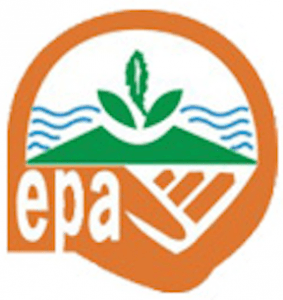EPA gathers evidence for addressing Climate Impact in Ghana
 The Environmental Protection Agency (EPA) has started the process of collection of data in 10 district assemblies that will feed into the designing of the country’s National Adaptation Plans (NAPs).
The Environmental Protection Agency (EPA) has started the process of collection of data in 10 district assemblies that will feed into the designing of the country’s National Adaptation Plans (NAPs).
The NAPs are an important tool that provides strategic and programmatic national approaches toward addressing climate change impacts.
The NAPs would also form part of Ghana’s Nationally Determined Contributions.
Close to 70 per cent of the population relies heavily on climate-sensitive sectors such as agriculture, fisheries and forestry, all of which are severely impacted by climate change.
The NAPs process, being supported by the United Nations Environment Programme (UNEP), a delivering partner, involved the gathering of information on climate change impacts and scenarios, projections and risk assessment that would culminate into a costed adaptation strategy, which would address medium to long term adaptations challenges, and provide the tools, mechanisms, system and information to be replicated at regular intervals.
The EPA has, therefore, held a cross-sectorial policy working group meeting, attended by a team from UNEP and other institutions that were contributing to the NAPs, including those from the private sector, civil society organisations, media, and public sector institutions to take their inputs.
Dr Antwi-Boasiako Amoah, a Deputy Director at EPA and the Project Coordinator, Ghana’s NAP, who briefed the Ghana News Agency on the event, said the consortium of the UNEP consultants and the technical team would work to develop a methodology for producing national climate change scenarios for Ghana, as well as develop a down-scaled area-based climate risk projections.
There would also be the development of climate risk assessments for all the agro-ecological zones in the country, and the undertaking of socio-economic modelling of priority sectors as well as the development of a summary for policy makers from the assessment report.
Dr Amoah explained the projections that would guide the country on how the climate situation or impact would be like in the future based on data and available information from the period of 2050, 2070, 2080 and even beyond.
“The idea is that once you have this information you can use it to do proper planning for adaptation in the country. Planning can happen at the sector level, either agriculture, forestry, transport, disaster or it can be at the sub-national level either the sub-metropolitan or municipal or district assembly level.”
He said because development patterns were changing due to climate change so adaptation must be anchored in the plans.
“So the meeting helped in getting inputs in the terms of reference of the work of the consultants, its include projections and risk assessments, taking two key ecological zones in the country, made up of the coastal zones and how climate change is going to play out and in Tamale representing dry land conditions in the northern part.”
Dr Amoah said the coastal zone was chosen due to its strategic location because about a quarter of Ghana’s population lived along the coast while most of the national strategic assets were also on the coast.
In the dry land ecology, the situations to be assessed would include droughts and floods conditions as well as insect infestation, among others.
He said the assessment would last for six months, ending in September 2022 and that global circulation models that looked at regional situations would be downscaled or customised to suit the Ghanaian local ecology.
The NAPS would be costed and going to have investment plans that could attract investment for implementation, “we will have to get the science and the evidence to be used for proper planning,” Dr Amoah said.
Among the 10 districts are Ellembelle, Sekondi-Takoradi, Tema, Asuogyaman in the Akosombo area, Enchi in the Aowin/Suaman District, Kumasi metropolis, Wenchi, Tamale and Walewale in the West Mamprusi district.
Dr Kwasi Quagraine, a lecturer at the University of Cape Town, South Africa, who was part of the UNEP team, explained that the work would be done with other local scientists and was expected to come out with climate risk narratives in the near future, the mid-future and the far future.
They would use climate variables like precipitation and temperature, satellite data and regional climate models for the research, while the Metropolitan, Municipal and District Assemblies were also to make inputs in the risk assessment segment.
He said the data would be very beneficial to the entire country including farmers, producers, and consumers as the information to be gathered would help create the needed adaptation measures and solutions to the impact of climate change.
Source: GNA
